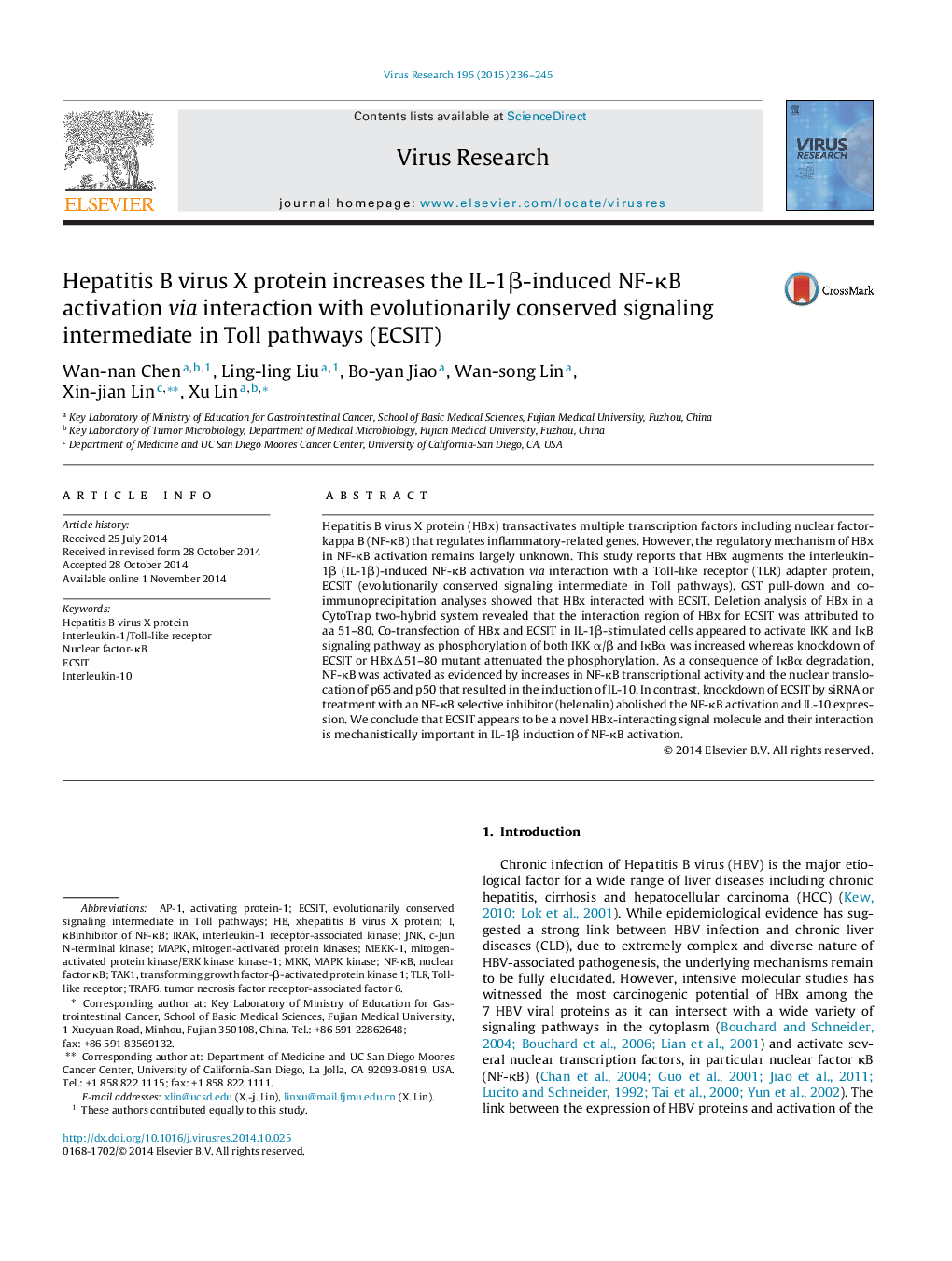| Article ID | Journal | Published Year | Pages | File Type |
|---|---|---|---|---|
| 3428369 | Virus Research | 2015 | 10 Pages |
•51–80 amino acid residues of HBx interacted with ECSIT.•HBx-ECSIT interaction activated IL-1β induced IKK/IκB/NF-κB signaling pathway.•Activation of NF-κB by HBx-ECSIT interaction resulted in the increment of IL-10.
Hepatitis B virus X protein (HBx) transactivates multiple transcription factors including nuclear factor-kappa B (NF-κB) that regulates inflammatory-related genes. However, the regulatory mechanism of HBx in NF-κB activation remains largely unknown. This study reports that HBx augments the interleukin-1β (IL-1β)-induced NF-κB activation via interaction with a Toll-like receptor (TLR) adapter protein, ECSIT (evolutionarily conserved signaling intermediate in Toll pathways). GST pull-down and co-immunoprecipitation analyses showed that HBx interacted with ECSIT. Deletion analysis of HBx in a CytoTrap two-hybrid system revealed that the interaction region of HBx for ECSIT was attributed to aa 51–80. Co-transfection of HBx and ECSIT in IL-1β-stimulated cells appeared to activate IKK and IκB signaling pathway as phosphorylation of both IKK α/β and IκBα was increased whereas knockdown of ECSIT or HBxΔ51–80 mutant attenuated the phosphorylation. As a consequence of IκBα degradation, NF-κB was activated as evidenced by increases in NF-κB transcriptional activity and the nuclear translocation of p65 and p50 that resulted in the induction of IL-10. In contrast, knockdown of ECSIT by siRNA or treatment with an NF-κB selective inhibitor (helenalin) abolished the NF-κB activation and IL-10 expression. We conclude that ECSIT appears to be a novel HBx-interacting signal molecule and their interaction is mechanistically important in IL-1β induction of NF-κB activation.
